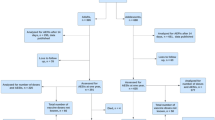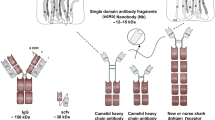Abstract
Purpose. The purpose of this study was to develop a single administration delivery system for a model birth control vaccine, in order to reduce the need for multiple injections and enhance immunogenicity.
Methods. The immunogen-loaded microspheres were prepared by solvent evaporation method and characterized for loading levels, size distribution and in vitro release kinetics. The microspheres were immunized intramuscularly in wistar rats and bonnet monkeys, and the antibody response was compared to that obtained with the same total dose of the immunogen on alum given at a monthly interval.
Results. Results indicated that a single injection of the immunogen entrapped in the microspheres generated a response comparable to that obtained by the same immunogen on alum injected at a monthly interval. The antibodies generated by the microspheres in the monkeys also had a good bioneutralization capacity indicating immunogen integrity during the microencapsulation process.
Conclusions. Biodegradable microspheres served as an effective delivery system for a model immunogen used in this study to reduce the need for frequent immunizations and enhance immunogenicity.
Similar content being viewed by others
REFERENCES
B. R. Bloom. Vaccines for the third world, Nature, 342:115–120 (1989).
G. P. Talwar, N. C. Sharma, S. K. Dubey, M. Salahuddin, C. Das, S. Ramakrishnan, S. Kumar, and V. Hingorani. Isoimmunization against human chorionic gonadotropin with conjugates of processed β-subunit of the hormone and tetanus toxoid, Proc. Natl. Acad. Sci. USA, 73:218–222 (1976).
G. P. Talwar, O. Singh, and L. V. Rao. An improved immunogen for anti-hCG vaccine eliciting antibodies reactive with conformation native to the hormone without cross-reaction with human follicle stimulating hormone and human thyroid stimulating hormone, Journal of Reproductive Immunology 14:203 (1988).
O. Singh, L. V. Rao, A. Gaur, N. C. Sharma, A. Alam, and G. P. Talwar. Antibody response and characteristics of antibodies in women immunised with three contraceptive vaccines inducing antibodies against human chorionic gonadotropin, Fertility and Sterility 52:739–744 (1989).
D. T. O'Hagan, H. Jefferey, M. J. J. Roberts, J. P. McGee, and S. S. Davis. Controlled release microparticles for vaccine development, Vaccine 9:768–771 (1991).
J. H. Eldridge, J. K. Staas, J. R. Meulbroek, J. R. McGhee, T. R. Tice, and R. M. Gilley. Biodegradable microspheres as a vaccine delivery system, Mol. Immunol. 28:287–294 (1991).
M. Singh, A. Singh, and G. P. Talwar Controlled delivery of diphtheria toxoid using biodegradable poly(D,L-lactide) microcapsules, Pharmaceutical Research 8:958–961 (1991).
M. J. Alonso, S. Cohen, T. G. Park, R. K. Gupta, G. R. Siber, and R. Langer. Determinants of release rate of tetanus toxoid vaccine from polyester microspheres, Pharmaceutical Research 10:945–953 (1993).
M. J. Alonso, R. K. Gupta, C. Min, G. R. Siber, and R. Langer Biodegradable microspheres as controlled-release tetanus toxoid delivery systems, Vaccine 4:299–306 (1994).
M. Singh, O. Singh, A. Singh, and G. P. Talwar. Immunogenicity studies on diphtheria toxoid loaded biodegradable microspheres, International Journal of Pharmaceutics 85:R5–R8 (1992).
R. S. Raghuvanshi, M. Singh, and G. P. Talwar. Biodegradable delivery system for single step immunization with tetanus toxoid., International Journal of Pharmaceutics 93:R1–R5 (1993).
D. T. O'Hagan, D. Rahman, J. P. McGee, H. Jeffery, W. P. Davies. Biodegradable microparticles as controlled release antigen delivery systems, Immunology 73:239–242 (1991).
J. H. Eldridge, J. K. Staas, J. A. Meulbroek, T. R. Tice, and R. M. Gilley. Biodegradable and biocompatible poly(D,L-Lactide-co-Glycolide) microspheres as an adjuvant for staphylococcal Enterotoxin B toxoid which enhances the level of toxin-neutralizing antibodies, Infection and Immunity 59:2978–2986 (1991).
M. Z. I. Khan, J. P. Opdebeeck, and I. G. Tucker. Immunopotentiation and delivery systems for antigens for single-step immunization: recent trends and progress, Pharmaceutical Research 1:2–11 (1994).
R. Langer, and J. Folkman. Polymers for sustained release of proteins and other macromolecules, Nature 263:797–800 (1976).
R. Langer. Polymers for the sustained release of macromolecules: Their use in a single step method of immunization, Methods Enzymol. 73:57–75 (1981).
N. V. Ranjani, P. G. Pande, D. Young and H. R. Bhagat. Evaluation of biodegradable microspheres as vaccine adjuvant for hepatitis B surface antigen, Journal of Parenteral Science and Technology, 46:176–180 (1992).
Author information
Authors and Affiliations
Rights and permissions
About this article
Cite this article
Singh, M., Singh, O. & Talwar, G.P. Biodegradable Delivery System for a Birth Control Vaccine: Immunogenicity Studies in Rats and Monkeys. Pharm Res 12, 1796–1800 (1995). https://doi.org/10.1023/A:1016294512292
Issue Date:
DOI: https://doi.org/10.1023/A:1016294512292




